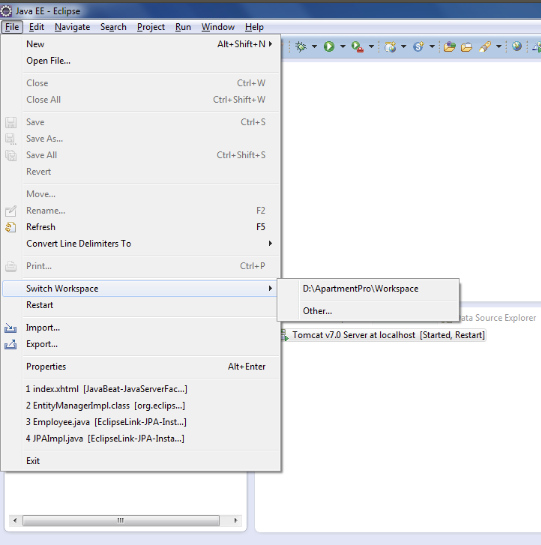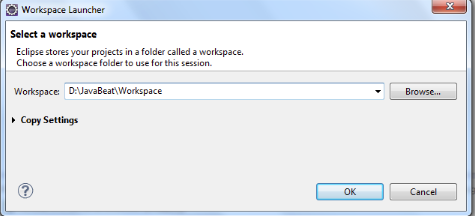One of the simple trick in Eclipse which many find difficult is to find the current path or location of the workspace. The confusion arises often when the developers are using the multiple workspaces and forget the current workspace used by the eclipse instance. Note that you can open multiple Eclipse instances with different worspaces. But, the same workspace can not be opened by more than one Eclipse instance.
This simple tip will help you to search the current path of the Eclipse Workspace. Please follow the steps provided below to find the path.
Click on the File Menu -> Switch Workspace -> Other

Current Workspace is shown in Workspace Launcher window


 JSF 2 Installation & Configuration Using Eclipse
JSF 2 Installation & Configuration Using Eclipse